This page provides an overview of the Crusaders and lists the sites reviewed in BibleWalks.com.
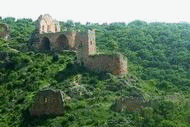
Home > Info > People > Crusaders
Contents:
History
Sites
Map
Etymology
Links
History
- First Crusade (1096-1099)
The crusade to liberate the Holy Land and free Jerusalem was initiated in the great council meeting of Piacenza (March 1095), following an appeal from the Byzantine emperor Alexios I Komnenos to repel the Muslim (Seljuk) Turks conquests in the south Turkey. Pope Urban II (1042-1099) pushed for a military action to the Holy Lands at the council of Clermont (27 November 1095), with the primary goal to assist the Byzantine capitol of Constantinople. His speech at the council had a great influence, resulting in a call for arms throughout Europe to regain the Holy Lands under the name of God.
A large force of volunteers was assembled in France, Germany and Italy, estimated at 30,000-40,000, which included peasants, trained soldiers, knights and nobles. On their way to the east, the unorganized Crusader armies butchered the Jews in Germany and looted the villages along the way.
They fought their way to Constantinople, and finally reached the city a year later.
The campaign against the Seljuks took another year to complete (June 1098), ending with the conquest of the mighty city of Antioch after 8 months of siege (in June 1098 – see illustration below).
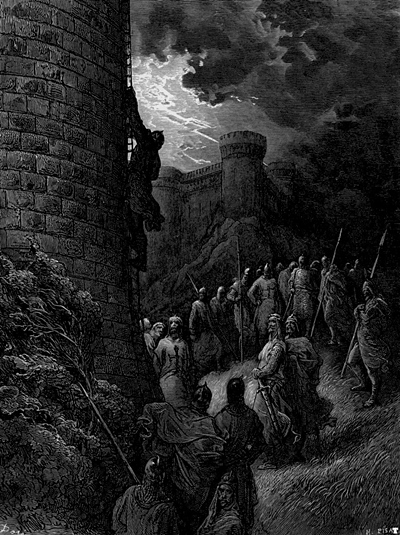
Siege of Antioch – Bohemond of Taranto climbs up the walls
– by Gustav Dore (French artist, 1832-1883)
The Crusade now focused on the secondary goal, which is to liberate Jerusalem. In the beginning of 1099 the Crusaders continued from Antioch towards Jerusalem, encountering little resistance along the coastal way. On June 7, 1099, three years after the military expedition started in Europe, the Crusaders finally approached the gates of Jerusalem. By then, their forces were reduced to about 10,000 soldiers.
The Crusaders first arrived to the site of Nebi Samuel, west of the city. Their first assault on the city took place a week later, on June 13. This attempt failed, as they lacked the machinery required to pierce the strong walls.
The Muslim Fatimid defenders chopped all the trees around the city. Therefore, the Crusaders waited until they secured a supply of wood which was required for building siege weapons, in order to breach the strong walls of Jerusalem. The arrival of the ships from Genoa to Jaffa on June 15 brought craftsman, tools and wood which were needed for building the ram and other siege installations.
The assault started on July 14, with the armies attacking the city from the north (headed by Godfrey), west (Tancred) and south (Raymond).
The Muslim defenders initially managed to repel the attacks with their use of catapults, throwing stones and burning pitch. Tancred attempted to capture the strong fortress on the west side of the city, known as the “Goliath” fortress (and later named after him). However, he could not capture it, but managed to breach the city walls at this site. 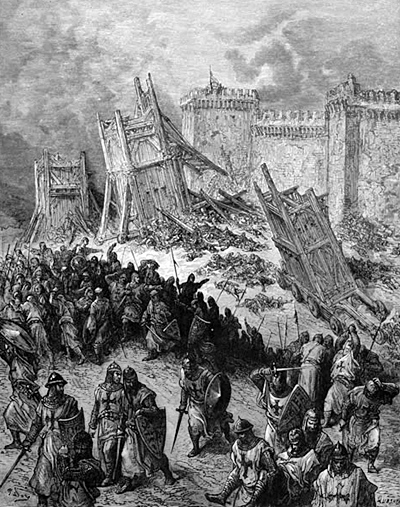
Attack on Jerusalem – the failed first day of the second assault
– by Gustav Dore (French artist, 1832-1883)
On midday of the second day of the siege (July 15) the Crusader’s ram managed to pierce a hole in the northern eastern wall adjacent to the Jewish quarter. The northern forces, headed by Godfrey de Bouillon, pushed into the breached walls In parallel, the southern forces broke into the city from Mount Zion. The attackers pushed into the city, beheading, burning and piercing with arrows all the inhabitants. Thus started a 3 day killing spree and sacking of the city. All the 40,000 inhabitants of the city – Jews and Muslims – were massacred, including men, women and children. This was a brutal conquest – according to chronicles of the period the Crusader horses “were up to their ankles in enemy blood” !.
The Egyptian Fatimid garrison, which was stationed in the tower of David, negotiated a truce and were allowed to leave the city unharmed, thus ending the campaign. The city was virtually empty from its population, except a few Orthodox Christians.
Following the capture of the city, which was the ultimate goal of the three years of the crusade, the joyful Crusaders celebrated their victory in the Church of Sepulchre, and established the Kingdom of Jerusalem.
Godfrey de Bouillon was elected the King of Jerusalem (with the title of the “defender of the Sepulcher) on July 22, but died a year later, succeeded by his brother Baldwin of Boulogne. Raymond left to Jericho, then continued to conquer other cities. Tancred captured the Galilee and was appointed to be the “Prince of Galilee” and received its lands. Tancred later received the regency of Antioch (1100), and remained there until his death at the age of 40 in 1112. Bohemond of Tarento, Tancred’s uncle, was the regent of Antioch before Tancred (1098-1100). The four leaders of the first Crusade are illustrated here.
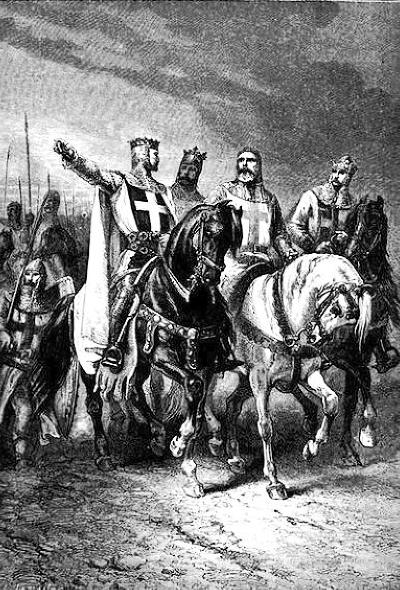
Leaders of the first Crusade – Godfrey de Bouillon, Raymond de Toulouse,
Bohemond de Tarento and Tancred d’Hauteville.
– by Gustav Dore (French artist, 1832-1883)
A final decisive battle between the Crusaders and the Egyptian Fatimid forces was held near Ashkelon on the south. The Crusader victory (August 14, 1099), which effectively used their cavalry to surprise the enemy, sealed their possession of the Holy Land for the following 200 years.
The Crusaders were driven out of Jerusalem in 1187 by the Arab forces headed by Saladin. The Crusaders returned to rule the city for a short time (1229-1244) following the sixth Crusade. They continued to control sections of the Holy land until the fall of Acre in 1291.
The other Crusades will be detailed in a later phase:
- Second Crusade (1147–1150)
- Third Crusade (1189–1192)
- Forth Crusade (1202–1204)
- Fifth Crusade (1217–1221)
- Sixth Crusade (1228–1229)
- Seventh Crusade (1248-1254)
- Eight Crusade (1270)
- Ninth Crusade (1271–1272)
- Tenth Crusade (1387-1392)
Sites of the Crusaders:
The following table lists the sites related to the Crusaders, ordered in alphabetic order. There are dozens of sites, as the Crusaders have made an incredible change to the landscape of the Holy Land in the 200 years of presence.
More than 75 tower castles have been identified in the Kingdom of Jerusalem, most of them dated to the 12th century. Other sites featured in the table are of churches and monasteries and other types of structures. The table lists only the sites that have been reviewed in BibleWalks.com.
Click on the site’s title to see more information on each site. Click on the photos to enlarge them.
| Site | What | Where | Time | Form | Sample Photo |
| __________ | _________________ | ________ | _________ | ________ | _________________ |
| (Click to get to the site)
(Casal Humberti) |
An administrative center | West Galilee | ~1100
to 1271 |
Town | 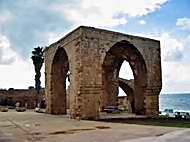 |
| Acre Port | The ancient port is located on the south east side of the old city.
|
Acre | to 1291 | Harbour | 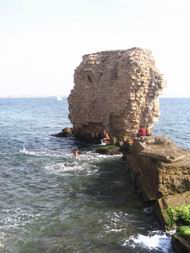 |
| Atlit | Atlit is a large Crusader fortress, 20KM south of Haifa. It was the last Crusader outpost in the Holy Land | Carmel
shore |
1218/1219
to 1291 |
Fortress, Harbour | 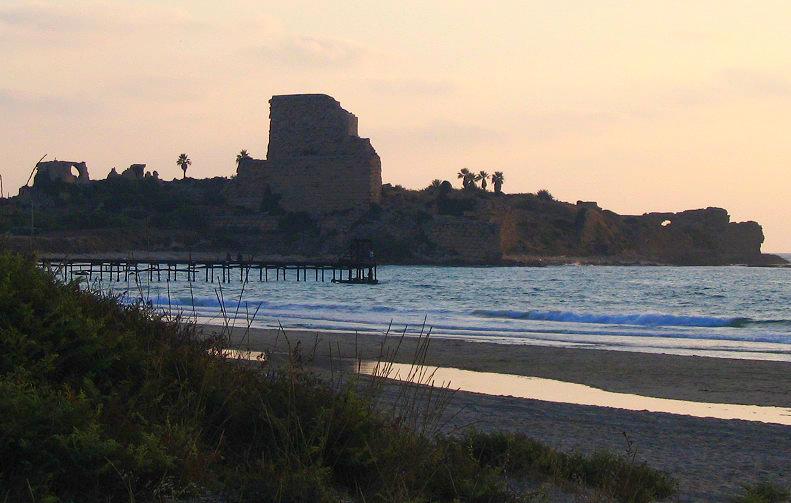 |
| Ateret | In 1178 King Baldwin IV constructed a fortified outpost south of the pass | Upper Galilee | 1178
to 1179 |
Fortress |  |
| Ashdod
(Castellum Beroart; Castellum Beroardi) |
The Crusaders renovated and reoccupied the Ashdod Maritime fortress | Shefela | 1131-1141
to 1290 |
Fortress |  |
| Ashkelon | A Crusader border fortress. | Shefala | 1099-1114,
1154-1187, 1191-1247 |
Fortress | 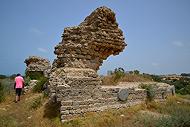 |
| Apollonia | Remains of a Crusader fortress on a cliff. | Sharon | 1101-1187,
1241-1265 |
Fortress | |
| Afek of Galilee
(Recordane or Ricordane) |
An ancient two-story Crusader flour mill and fortress | West Galilee | Flour Mill,
Fortress |
 |
|
| Banias | The Crusaders fortified the frontier city of Banias in the 12th century. | Golan heights | 1129
to 1260 |
City,
Fortress |
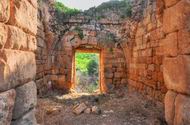 |
| Beit Shean | Beit Shean during the Crusaders times was a small town, first claimed by prince Tancred | Yizreel
Valley |
1075
to 1187 |
Fortress | 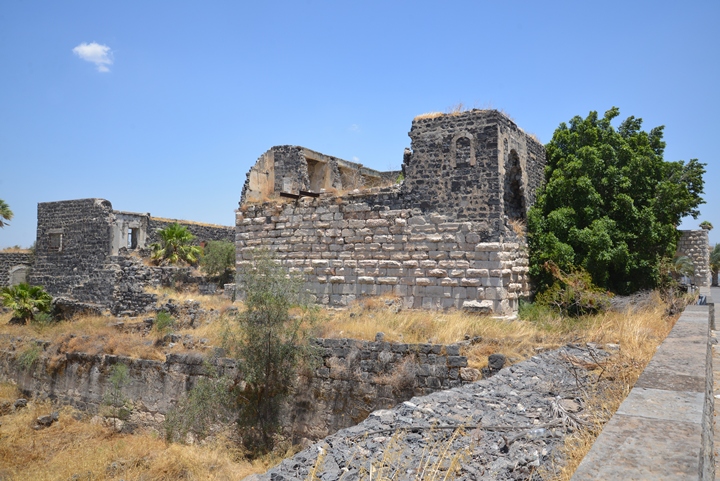 |
| Belvoir | Ruins of an impressive Crusaders fortress located on a high cliff above above the northern Jordan valley. | Jordan
Valley |
1168 -1187,
1243-1263 |
Fortress |  |
| Berniki Hill | Restored Byzantine church on a hilltop over Tiberias. | Tiberias | to 1187 | Hilltop
monastery |
|
| Caesarea Maritima (“by the Sea”) | One of the most important cities in the Roman World, and a Crusader fortress along the road from Acre to Jerusalem. | Sharon | -1189,
|
Fortress | 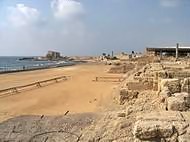 |
| Castel
(Castellum Belveer) |
Hilltop stronghold protecting the road to Jerusalem. | Near Jerusalem | to 1187 | Fort | 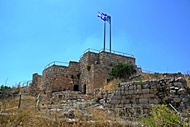 |
| Tower of David | Tower of David is Jerusalem’s citadel, located near Jaffa gate on the western side of the old city wall. | Jerusalem | 1099
to 1187 |
Fortress | 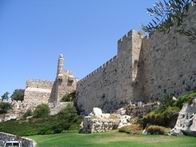 |
| Dor
(Merle) |
Fortress on the acropolis, on the south-western side of the city | Carmel | to 1264 | Fortress | 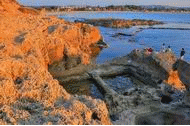 |
| Dubbah (Digegia) | One of the 3 Crusaders villages on Mt. Carmel | Carmel | Village | 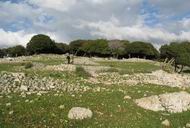 |
|
| Dur
(Dere) |
Ruins of a small Upper Galilee village, part of the Lands of Godfrey le Tor. | Upper Galilee | Village | 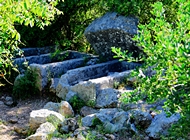 |
|
| Ein Tut
(Salvatio) |
12th century Crusader village had about 5 residential and farm houses, and a Church. It was managed by monks of the Cistercian order | Judea | Village | 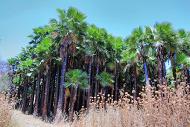 |
|
| Ferasin
(Afarsin) |
An agriculture town. | Samaria | Town | 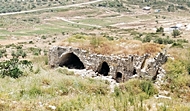 |
|
| Gaza | Fortified by King Baldwin III, guarded by knights of the Templars order | Shefela | 1149-1187 | Fortress |  |
| Good samaritan
(“Red Castle”, Castellum Rouge) |
The fortress was erected by the order of the Knights Templar to protect the pilgrimage road | Judea
desert |
1169-1172
to 1187 |
Fortress,
Inn |
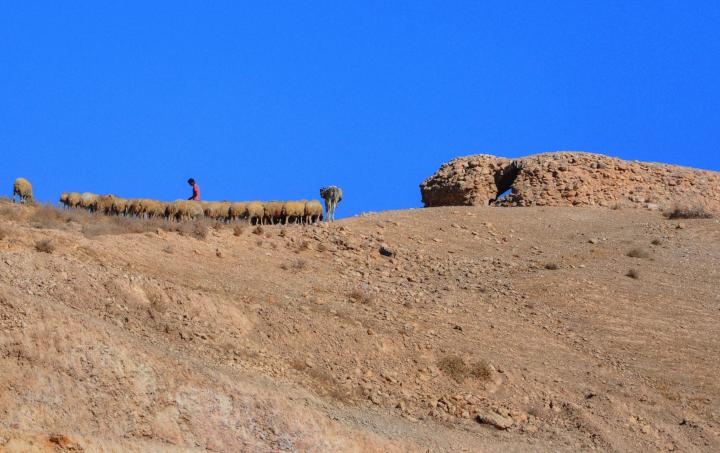 |
| Ha-Bonim
(“Cafarlet” or “Capharlet”) |
A Crusader fortress | Carmel-coast | to 1291 | Fortress | 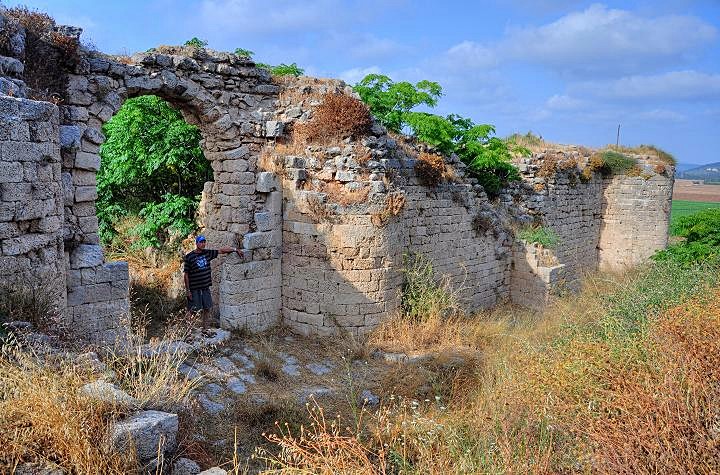 |
| Hannathon | A fortified farm was built on top of the hill. The underground halls of the structure can be visited today. | Lower Galilee | Fortified farmhouse | 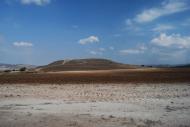 |
|
| Horns of Hittim | Best known for the crucial battle between Saladin and the Crusaders | Sea of Galilee | 1187 | Battlefield | |
| Hunin | Ruins of a Crusaders frontier fortress | Upper
Galilee |
1106/7
to 1167 |
Fortress | 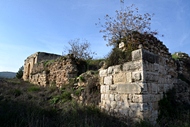 |
| Knights halls | Crusaders main fortress and headquarters | Acre | 110x
to 1191 |
Fortress |  |
|
Last Supper (Coenaculum) |
Traditional site of the the location of the Last Supper | Jerusalem | Sacred Site | ||
| Located on the side of the road from Jaffa and Ramla to Jerusalem. | Ayalon
valley |
1137
to 1263 |
Fortress | ||
| Manot
(Manueth) |
Ruins of a Crusaders fortified farm complex, including a sugar processing factory. | Upper Galilee | 1169
to 1260 |
Village,
Factory |
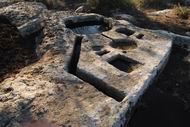 |
| Manot
(Manueth) |
Ruins of a Crusaders fortified farm complex, including a sugar processing factory. | Upper Galilee | 1169
to 1260 |
Village,
Factory |
 |
| Mar Elias | Monastery on the side of the road from Jerusalem to Bethlehem. Built over the ruins of a Byzantine church. | Jerusalem | 1160
to date |
Monastery |  |
| Mary’s Tomb | A church at the traditional place of the tomb of the virgin Mary. | Jerusalem | to 1187 | Tomb,
Church |
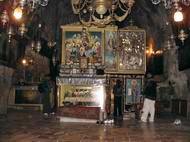 |
| Migdal Afek | The fortress of Migdal Afek controlled the narrow pass of Via Maris. | Shefela | 11xx to
1191 |
Fortress | |
| Mi’ilya (King’s castle) | First belonged to the Crusader King Baldwin III, called the “King’s fortress”. | Upper Galilee | Castle | 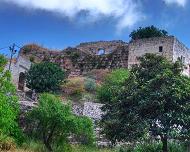 |
|
| Monastery of the Cross | A large center in the 13-14th century, and hosted a hundreds of Georgian monks, scholars and poets. | Jerusalem | Monastery | ||
| Montfort | Ruins of a remote Crusaders castle located in the heart of the nature park of Kziv creek. | Upper Galilee | Mid 12th century
to 1271 |
Castle | 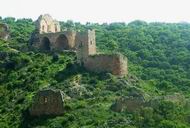 |
| Muristan | The site of the Crusaders Hospitallers quarters and hospital | Jerusalem | 1099-1187 | Hospital | 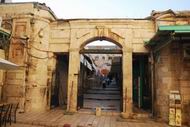 |
| Nebi Samuel | A military fortress, religious site and a hostel for Christian pilgrims on their way to Jerusalem. | Judea | 1099
to 1187 |
Fortress, Church, Inn | 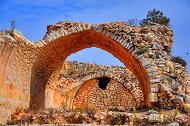 |
| Nimrod | One of the largest and most impressive fortresses in Israel. | Golan heights | 1129-1132,
1140-1164 |
Fortress | 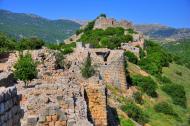 |
| Pater Nostre | Built on the ruins of the Byzantine Eleona Basilica on Mt Olives | Jerusalem | 1152
to 1187 |
Church | 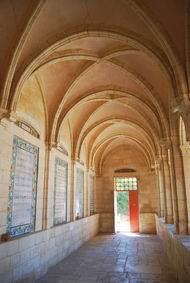 |
| Qaqun (Caco, Chaco) | Remains of a Crusader and Mameluke period fortress | Sharon | ~ 1123
to 1265 |
Fortress | 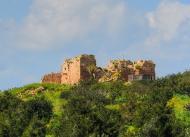 |
| Kh. Qarta
(Dustrey) |
A small Crusaders post east of the Atlit fortress, built as a police station | Carmel shore | 1118
to 1291 |
Fort |  |
| Qula
(Kola or Cola)
|
Ruins of a Crusader fortress | Shefela | 1181
to 1187 |
Fortress | 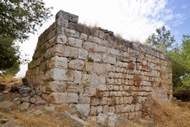 |
| Red Tower
(Turris Rubea) |
Remains of a small Crusader period keep near Kefar Yonah. | Sharon | 1100-1150
to 1265 |
Keep |  |
| St. John
Samaria city |
Crusaders built on the ruins of the eastern gate. Dedicated to John the Baptist, built over traditional site of his tomb | Samaria | Church |  |
|
| Sepphoris
(Le Saphorie) |
The Crusaders rebuilt sections of the city and the fortress | Lower Galilee | to 1187 | City, Fortress | 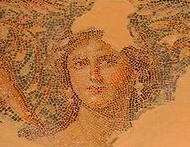 |
| Holy Sepulchre | One of the most holiest churches, located in Jerusalem at the traditional site of Golgotha | Jerusalem | 1099
to 1187 |
Church |  |
| Shefaram
(Le Saffran) |
The Crusaders built here a fort to protect the road from Acre to Nazareth | West Galilee | to 1187,
1229-1291 |
Fortress |  |
| Siah Brook (St. Brocardus) | Ruins of a small 13th century Carmelite church and monastery in Siah brook | Carmel | 1200
to 1291 (?) |
Monastery | 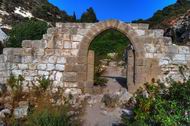 |
| St. Anna | One of the few surviving large structures from the Crusaders period | Jerusalem | 1099
to today |
Church | |
| Stella Maris | Crusaders built a fortress over the ruins of the Byzantine church | Carmel | to 1291 | Fortress | |
| St. Gabriel | Byzantine Church Rebuilt by the Crusaders in the 12th century | Nazareth | to 1263 | Church | 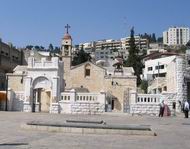 |
| St. Gerassimos | Monastery near Jericho, rebuilt by the Crusaders over Byzantine ruin | Jordan Valley | Monastery | 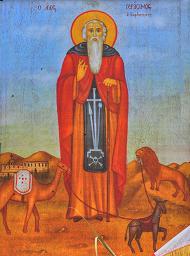 |
|
| St. George
(St. Jorge de Lidde) |
Church with remains of St. George – most important Christian soldier-saint | Lod (Lydda) | 1150-1170
to 1191 |
Church |  |
| St. George Koziba | A cliff hanging Byzantine monastery in the valley of Wadi Qelt, near Jericho. | Judea desert | 1179 restored | Monastery | |
| St. John Ba Harim | Built by the Hospitallers over Byzantine ruins | Ein Kerem
Jerusalem
|
1104-1187 | Church |  |
| St. James, Armenian section | Built over the ruins of the Byzantine church. | Jerusalem | Church | 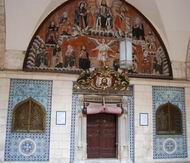 |
|
| St. Joseph’s House | A Crusaders church was built over the site of the Byzantine church- the church of the Nutrition, or St. Joseph’s House. | Nazareth | to 1263 | Church | 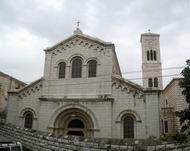 |
| St. John the Baptist | Center of the Knights Hospitallers , and functioned as a hostel and a hospital to the wounded Crusaders | Jerusalem | 1099
to 1187 |
||
| Sultan’s pool (“Germanus” pool) | Water reservoir west of the old city | Jerusalem | Water reservoir | 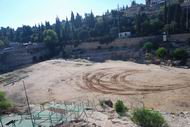 |
|
| Synagogue Church, Nazareth | Built by the Crusaders. According to tradition, it is the site of the synagogue of young Jesus | Nazareth | Church |  |
|
| Tabor | On top of Mount Tabor are ruins of the Crusaders fortress, ancient chapels and churches, and other structures. | Yizreel valley | Fortress, Churches,
Chapels |
 |
|
| Tancred fortress | Ruins of a fortress, dated to the Crusader period, located on the north west corner of the old city. | Jerusalem | to 1187 | 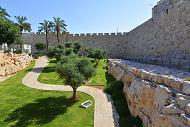 |
|
| Taibe in the Galilee
(“Le Forbelet”) |
Remains of a Crusader fortified farmhouse, in the center of et-Taiyibe in the Jezreel valley. | Yizreel valley | 1168
to 1183 |
Fortified farmhouse |  |
| Tel Yizreel
(Parvum Gerinum, Le-Petite Gerin) |
A small Crusaders village built on the ruins of a major Biblical city | Yizreel valley | to
1187 |
Village | |
| Tel Tanninim | On top of the hill of Crocodilopolis are remains of the Crusader period tower. | Sharon | to
1263-5 |
Tower | |
| Temple mount
(Templum Domini) |
Turned the Dome of the rock to a church, Al-Aksa mosque to Baldwin’s royal palace in 1104, naming it King Solomon’s palace. | Jerusalem | 1099-1187 | Church,
Palace |
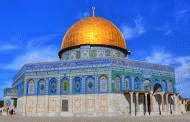 |
| Templars tunnel | Built by the Crusader Templars to connect their fortress on the south-west side of Acre to the harbor | Acre | ~1187
to 1291 |
Military tunnel | 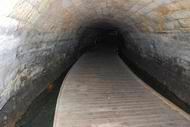 |
| Tiberias
|
A crusaders fortress was located on the south east side of the old city. | Sea of Galilee | 1100? to 1187 | Fortress |  |
| Tel Tzafit
(Blanche Garde – white fortress) |
A small castle and village were built on the mound. | Shephela | 1142-1187,
1192-1193 |
Fortress,
Village |
 |
| Tel Tzova
(Belmont – pretty mountain) |
A castle and village on a hill | Jerusalem hills | 1169-1187 | Fortress,
Village |
|
| Visitation church, Ein Kerem | Upper floor of the visitation church shows remains of the Crusaders church, especially on the south wing. | Jerusalem | Church |  |
|
| Yavne
(Ibelin) |
Fortified town on the side of Via Maris above Sorek valley | Shefela | 1099-1187,
1191-1240
|
Fortress, Church, Town |  |
| Yehi’am Fortress | Crusader hilltop fortress | West
Galilee |
1192 – 1271 | Fortress | |
| Yokneam
(Cain Mons)
|
Stands in the entrance of a mountain pass through Mount Carmel | Yizreel
Valley |
Fortified town, Church | ||
| Zefat
(Safed) |
Huge fortress, on a high hill above the city of Zefat. |
Upper Galilee | 1157
to 1266 |
Fortress | 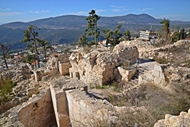 |
| Zonem | Farming | Upper Galilee | Village | ||
| Zohar | Fortress in the Zohar valley, guarding a mountain pass | Dead Sea | Fortress | 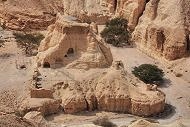 |
|
Total: 78 sites. More will be added….
Map of sites:
View an interactive map of the Crusaders fortresses in Israel.
Etymology – behind the name:
- Crusades – a series of religious campaigns in the 11th thru the 14th centuries, in the objective of liberating Jerusalem and the Holy Land from Islamic rule. The word ‘Crusader’, an 18th century English word, is based on a Medieval term of a crusader (crucesignatus -“one signed by the cross”), which lead to the French word croisade.
- Jihad – Islamic religious war against unbelievers.
Links:
External:
-
- Crusader Castles in the Holy Land 1097-1192 – Book by David Nicole (Osprey publishing, 2004)
-
Crusader Castles in the Holy Land 1192–1302 – Book by David Nicole (Osprey publishing, 2005)
- Join BibleWalks’s Facebook page: The Crusaders
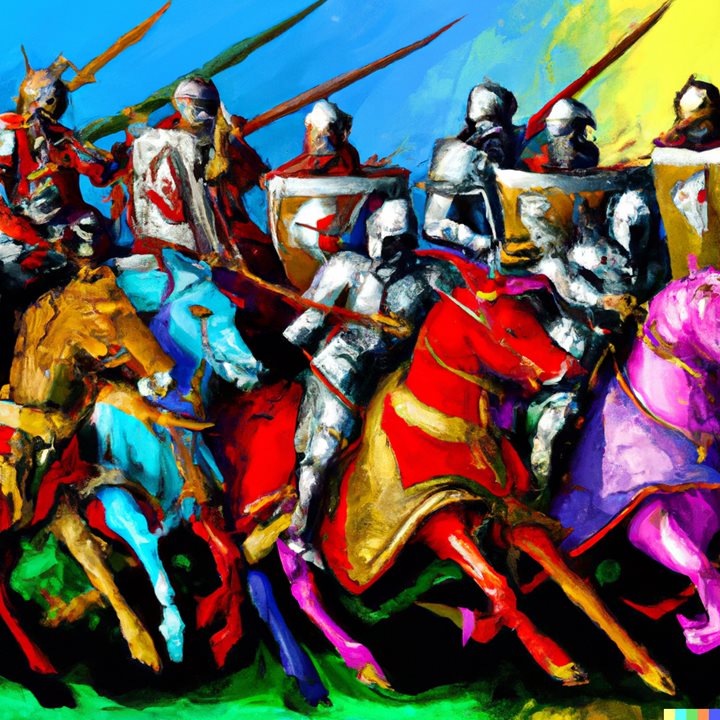
Crusaders battle – AI Illustration by DALL-E 2
BibleWalks.com – Travel to the Crusaders sites
Byzantine Monks <<<—Previous info—<<< All Info >>>—Next Info—>>> Nabateans
This page was last updated on Nov 30, 2024 (note on 1291)
Sponsored links: